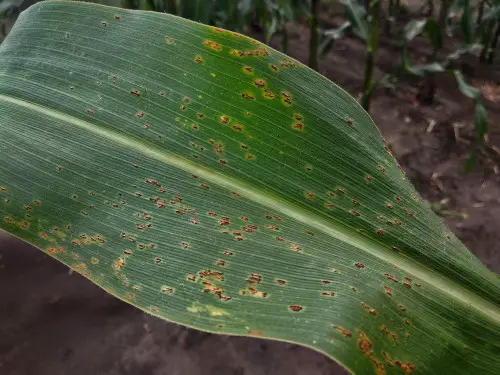Corn plants are a popular houseplant due to their low maintenance and elegant appearance. However, brown spots on corn plant leaves can be a common problem that can affect their health and appearance.
Brown spots can be caused by a variety of factors, including pests, diseases, nutrient deficiencies, and environmental factors. Understanding the causes and treatments of brown spots on corn plant leaves is essential for maintaining the health and beauty of these plants.
Common causes of brown spots on corn plant leaves include pests and diseases, such as spider mites, mealybugs, and fungal infections. Nutrient deficiencies, such as a lack of nitrogen, magnesium, or iron, can also cause brown spots.
Environmental factors, such as inconsistent watering, humidity, temperature, light, and fertilizer, can also contribute to the development of brown spots. Proper care and attention can help prevent brown spots from forming and can aid in the recovery of affected plants.
Key Takeaways
- Brown spots on corn plant leaves can be caused by pests, diseases, nutrient deficiencies, and environmental factors.
- Proper care and attention, such as consistent watering, appropriate lighting, and fertilization, can prevent brown spots from forming.
- Treatment for brown spots on corn plant leaves depends on the underlying cause and may involve removing affected leaves, repotting, or treating with insecticides or fungicides.
Also read:
Understanding Brown Spots on Corn Plant Leaves
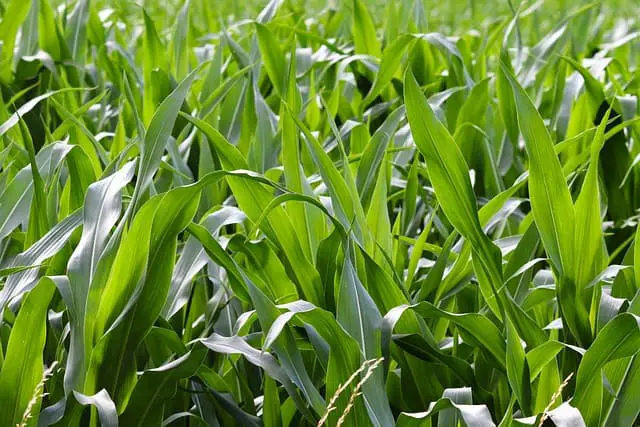
Corn plants are popular indoor plants that are known for their tall and elegant appearance. However, brown spots on their leaves can be a common problem that many plant owners face. Understanding what causes these spots can help you take the necessary steps to prevent and treat them.
Brown spots on corn plant leaves can be caused by a variety of factors, including inconsistent watering, sunburn, fungal infections, and nutrient deficiencies. Inconsistent watering is a common cause of brown spots on corn plant leaves.
During the summer and spring months, corn plants require more nutrients and water than they do during the winter. It is important to water the plant according to the soil’s moisture level rather than following a strict watering schedule.
Sunburn can also cause brown spots on corn plant leaves. If the plant is exposed to too much direct sunlight, it can result in brown spots with a yellow outer ring around them. This can be easily fixed by moving the plant away from the window or using a curtain or UV filtering window film to filter the sunlight.
Fungal infections are another common cause of brown spots on corn plant leaves. The Northern corn leaf blight is a common fungal infection that causes small brown spots on the leaves, which then enlarge and merge to form large irregular patches.
To prevent fungal infections, it is important to maintain good plant hygiene and avoid overwatering.
Nutrient deficiencies can also cause brown spots on corn plant leaves. If the plant is not getting enough nutrients such as nitrogen, magnesium, or iron, it can result in brown spots on the leaves. To fix this problem, it is recommended to fertilize the corn plant with a balanced fertilizer according to the instructions on the package.
Brown Spots on Corn Plant Leaves – 7 Common Problems
Brown spots on corn plant leaves can be caused by a variety of factors. Here are some of the most common causes:
1. Watering
Overwatering or underwatering can both lead to brown spots on corn plant leaves. If the soil is too wet, it can cause root rot, which can lead to brown spots on the leaves. On the other hand, if the soil is too dry, it can cause the leaves to dry out and turn brown.
2. Light
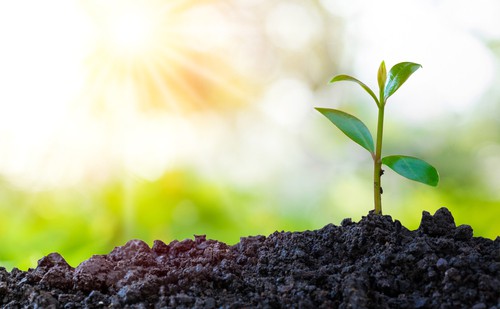
Corn plants need bright, indirect light to thrive. If they are not getting enough light, it can cause the leaves to turn brown and dry out. Similarly, if they are getting too much direct sunlight, it can cause sunburn and brown spots on the leaves.
3. Soil
The soil that the corn plant is grown in can also contribute to brown spots on the leaves. If the soil is too acidic or too alkaline, it can affect the plant’s ability to absorb nutrients, which can lead to brown spots on the leaves.
4. Humidity
Corn plants prefer a humid environment, and low humidity can cause the leaves to dry out and turn brown. On the other hand, high humidity can lead to fungal diseases like leaf spot and anthracnose, which can also cause brown spots on the leaves.
5. Chlorine
Chlorine in tap water can also cause brown spots on corn plant leaves. If the plant is regularly watered with tap water that contains chlorine, it can build up in the soil and affect the plant’s ability to absorb nutrients.
6. Temperature and Moisture
Corn plants prefer warm, moist environments. If the temperature is too low or the air is too dry, it can cause the leaves to dry out and turn brown. Similarly, if the plant is exposed to too much moisture, it can lead to fungal diseases and brown spots on the leaves.
7. Stress
Stress can also cause brown spots on corn plant leaves. This can be caused by a variety of factors, including inconsistent watering, low light, and pest infestations.
Overall, it is important to identify the cause of brown spots on corn plant leaves in order to address the issue and prevent further damage.
By ensuring that the plant is getting the right amount of water, light, and nutrients, and by monitoring the humidity and temperature levels, it is possible to keep the plant healthy and free from brown spots.
Pests and Diseases Affecting Corn Plants
Corn plants are susceptible to various pests and diseases that can cause brown spots on their leaves. These spots can be a sign of a more significant problem that may affect the plant’s growth and yield. Here are some of the common pests and diseases that affect corn plants:
Pests
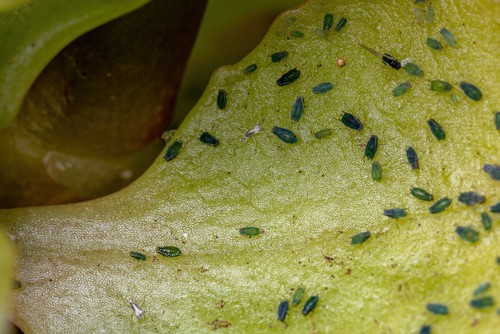
- Spider Mites: These tiny pests are common in hot and dry conditions. They feed on the sap of the corn plant, causing yellowing and brown spots on the leaves. Spider mites can be controlled with insecticidal soap or neem oil.
- Thrips: Thrips are small insects that feed on the sap of the corn plant. They cause brown spots on the leaves and can lead to stunted growth. Thrips can be controlled with insecticidal soap or neem oil.
- Mealybugs: Mealybugs are small, white, fluffy insects that feed on the sap of the corn plant. They cause yellowing and brown spots on the leaves. Mealybugs can be controlled with insecticidal soap or neem oil.
Diseases
- Fungal Infections: Fungal infections are common in humid conditions. They cause brown spots on the leaves, which can spread to the rest of the plant. Fungal infections can be controlled with fungicides.
- Physoderma Brown Spot Disease: This fungal disease causes yellow to brown lesions on the leaves. It is favored by warm and wet conditions. Physoderma brown spot disease can be controlled with fungicides.
- Gray Leaf Spot: Gray leaf spot is caused by a fungus that overwinters on corn residue. It is prevalent in continuous corn or no-till soybean/corn rotations. Gray leaf spot can be controlled with fungicides.
Nutrient Deficiencies and Brown Spots
Brown spots on corn plant leaves can be an indication of nutrient deficiencies. When plants lack essential nutrients, they may not be able to produce healthy leaves, stems, and roots. Nutrient deficiencies can be caused by a variety of factors, including poor soil quality, improper fertilization, and environmental stresses.
One of the most common nutrient deficiencies that can cause brown spots on corn plant leaves is nitrogen deficiency. Nitrogen is one of the essential macronutrients required for plant growth and development.
When corn plants don’t get enough nitrogen, they may develop brown spots on their leaves. Nitrogen deficiency can also cause stunted growth and reduced yield.
Another nutrient deficiency that can cause brown spots on corn plant leaves is iron deficiency. Iron is an essential micronutrient required for chlorophyll synthesis. When corn plants don’t get enough iron, they may develop chlorosis, which is characterized by yellowing of the leaves. In severe cases, the leaves may turn brown and die.
Magnesium deficiency is another nutrient deficiency that can cause brown spots on corn plant leaves. Magnesium is an essential macronutrient required for photosynthesis and other metabolic processes.
When corn plants don’t get enough magnesium, they may develop brown spots on their leaves, which may be accompanied by yellowing and curling of the leaves.
Fluoride toxicity can also cause brown spots on corn plant leaves. Fluoride is a naturally occurring element that can be found in soil and water. When corn plants are exposed to high levels of fluoride, they may develop brown spots on their leaves, which may be accompanied by necrosis and leaf drop.
To prevent brown spots on corn plant leaves, it is important to fertilize the plants properly with a balanced fertilizer that contains all the essential nutrients. Regular soil testing can also help identify nutrient deficiencies and guide fertilization practices.
Care Tips to Prevent Brown Spots
To prevent brown spots on corn plant leaves, proper care is essential. Here are some tips to keep your corn plant healthy and free of brown spots:
1. Watering
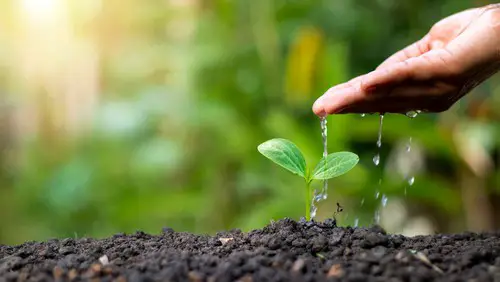
Corn plants require consistent moisture to thrive. Overwatering or underwatering can cause brown spots on the leaves. It is recommended to water the plant thoroughly and allow the soil to dry out slightly before watering again.
The soil should be kept consistently moist, but not soggy. It is better to water according to what the soil feels like rather than following a watering plan. Using rainwater or distilled water is ideal as it is free of chemicals that can harm the plant.
2. Humidity
Corn plants prefer a humid environment, so it is essential to keep the humidity level high. Misting the leaves regularly or placing a humidifier nearby can help maintain the required humidity level. Avoid placing the plant near drafts or in low humidity areas as it can cause the leaves to dry out and brown.
3. Temperature and Light
Corn plants thrive in temperatures between 60-75°F (15.5-24°C). Avoid exposing the plant to temperatures below 55°F (12.7°C) and above 85°F (29.4°C) as it can cause brown spots on the leaves. Corn plants prefer bright but indirect sunlight, so it is essential to place the plant in a well-lit area away from direct sunlight.
4. Air Circulation
Good air circulation is crucial for the health of corn plants. It is recommended to place the plant in an area with good air circulation to prevent the buildup of moisture on the leaves. Avoid placing the plant in a closed area with poor ventilation as it can cause the leaves to dry out and brown.
By following these care tips, you can prevent brown spots on your corn plant leaves and promote new growth.
Dealing with Brown Spots: Treatment and Recovery
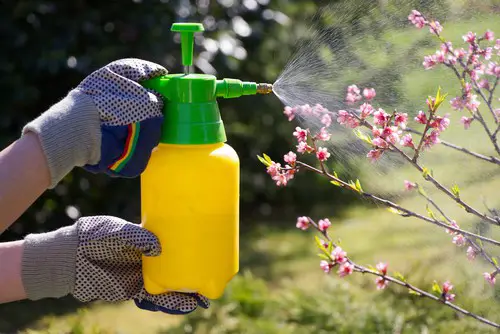
Brown spots on corn plant leaves can be a sign of various issues, including overwatering, underwatering, pests, or disease. The first step in treating brown spots is to identify the underlying cause and take corrective action.
If the brown spots are caused by overwatering, reduce the moisture level in the soil by cutting back on watering. On the other hand, if the brown spots are caused by underwatering, increase the frequency of watering and ensure that the soil is moist but not waterlogged.
Pests such as spider mites and mealybugs can also cause brown spots on corn plant leaves. To get rid of these pests, wipe down the leaves with a damp cloth or use insecticidal soap.
Diseases such as leaf blight and leaf spot can also cause brown spots on corn plant leaves. To treat these diseases, cut off the affected leaves and dispose of them in a sealed container to prevent the spread of the disease.
If the brown spots are severe and widespread, it may be necessary to repot the plant in fresh soil. When repotting, ensure that the new container is only slightly larger than the previous one to prevent overwatering.
In addition to treating the underlying cause of brown spots, it is also important to promote recovery and prevent further damage. This can be achieved by ensuring that the corn plant is placed in a well-lit area that receives indirect sunlight and maintaining a consistent watering schedule.
By taking these steps, it is possible to treat brown spots on corn plant leaves and promote recovery. However, it is important to note that recovery may take time, and it is important to be patient and consistent in the care of the plant.
Repotting and Soil Considerations
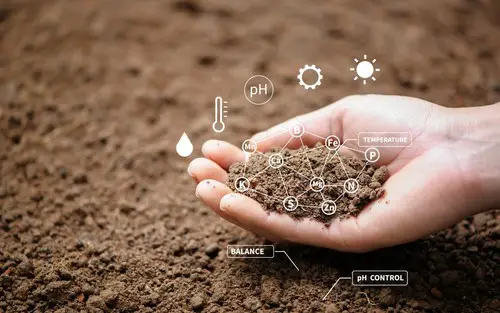
When it comes to brown spots on corn plant leaves, one possible cause could be related to the soil and the potting conditions. Therefore, repotting the plant and considering soil conditions is an important step to take in order to prevent further damage.
If the corn plant is a new plant, it is important to ensure that it is potted in a container that is the right size. A container that is too small can lead to root bound plants, which can cause brown spots on the leaves.
On the other hand, a container that is too large can result in overwatering, which can also lead to brown spots on the leaves. A good rule of thumb is to choose a container that is one size larger than the current container.
In terms of soil, it is important to choose a high-quality potting soil that is well-draining and has good moisture retention. This will help to ensure that the plant is not over or under-watered, which can cause brown spots on the leaves.
Additionally, it is important to avoid using soil that is too heavy, as this can lead to poor drainage and root rot.
When repotting the corn plant, it is important to remove any old soil and gently loosen the roots before placing it into the new container. It is also important to ensure that the soil is packed firmly around the roots, but not too tightly. This will help to ensure that the plant has good support and access to the nutrients it needs to thrive.
Overall, repotting and soil considerations are important steps to take when dealing with brown spots on corn plant leaves. By choosing the right container and potting soil, and ensuring that the plant is properly repotted, it is possible to prevent further damage and help the plant to thrive in moist conditions.
Varieties of Corn Plants and Their Susceptibility to Brown Spots
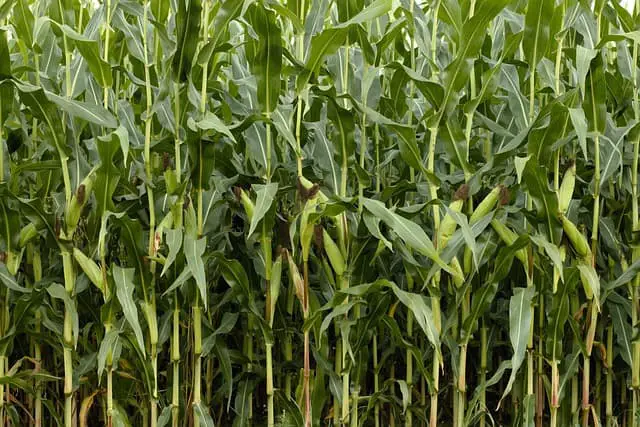
Corn plants, also known as Dracaena fragrans, are a popular indoor plant that can add a touch of greenery to any room. However, they are susceptible to brown spots on their leaves, which can be caused by a variety of factors, including fungal infections, sunburn, and inconsistent watering.
When it comes to the susceptibility of different varieties of corn plants to brown spots, there are a few things to keep in mind. Some varieties are more prone to developing brown spots than others, and this can be influenced by factors such as the plant’s age, growing conditions, and overall health.
One variety that is particularly susceptible to brown spots is the corn plant, also known as Dracaena fragrans. This plant is a popular choice for indoor gardening, but it is important to keep an eye out for brown spots on its leaves. In general, the corn plant is more susceptible to brown spots when it is young and has not yet fully matured.
Another variety of corn plant that may be prone to brown spots is the new plant. This variety is particularly susceptible to fungal infections, which can cause brown spots on the leaves. To avoid this problem, it is important to keep the plant in a well-ventilated area and to avoid overwatering.
Overall, it is important to choose a variety of corn plant that is well-suited to your growing conditions and to take steps to prevent brown spots from developing. This may include providing adequate lighting, avoiding overwatering, and using fungicides or other treatments as needed.
With the right care, your corn plant can thrive and add beauty to your home for years to come.
Frequently Asked Questions
How to treat brown spots on corn plant leaves
To treat brown spots on corn plant leaves, it is important to identify the cause of the problem. Overwatering or underwatering, direct sunlight exposure, pests, and diseases are common causes of brown spots on corn plant leaves.
Once the cause is identified, appropriate action can be taken. For example, if the cause is overwatering, reduce watering frequency and make sure that the soil is well-draining. If the cause is pests, use an appropriate insecticide to get rid of them.
Corn plant leaf spot disease
Corn plant leaf spot disease is a fungal infection that causes brown spots on corn plant leaves. The spots may be circular or irregular in shape and may have a yellow halo around them.
The disease can be prevented by avoiding overwatering and providing good air circulation around the plant. If the disease is already present, remove the affected leaves and treat the plant with a fungicide.
Dracaena leaf spot disease
Dracaena leaf spot disease is also a fungal infection that causes brown spots on corn plant leaves. The spots may be circular or irregular in shape and may have a yellow halo around them.
The disease can be prevented by avoiding overwatering and providing good air circulation around the plant. If the disease is already present, remove the affected leaves and treat the plant with a fungicide.
Corn plant leaves turning brown and yellow
Corn plant leaves turning brown and yellow may be a sign of overwatering or underwatering, pests, or diseases. It is important to identify the cause of the problem and take appropriate action.
If the cause is overwatering, reduce watering frequency and make sure that the soil is well-draining. If the cause is pests, use an appropriate insecticide to get rid of them. If the cause is a disease, remove the affected leaves and treat the plant with a fungicide.
Yellow spots on corn plant leaves
Yellow spots on corn plant leaves may be a sign of nutrient deficiency or overwatering. It is important to identify the cause of the problem and take appropriate action.
If the cause is nutrient deficiency, fertilize the plant with an appropriate fertilizer. If the cause is overwatering, reduce watering frequency and make sure that the soil is well-draining.
Why does my corn plant have brown spots on leaves?
Corn plants may have brown spots on leaves due to overwatering or underwatering, direct sunlight exposure, pests, or diseases. It is important to identify the cause of the problem and take appropriate action.
Once the cause is identified, appropriate action can be taken. For example, if the cause is overwatering, reduce watering frequency and make sure that the soil is well-draining. If the cause is pests, use an appropriate insecticide to get rid of them.

Hey, I’m Lisa and I’ve been an avid gardener for over 30 years. I love writing, talking and living in the garden! Feel free to connect with me on my socials below

